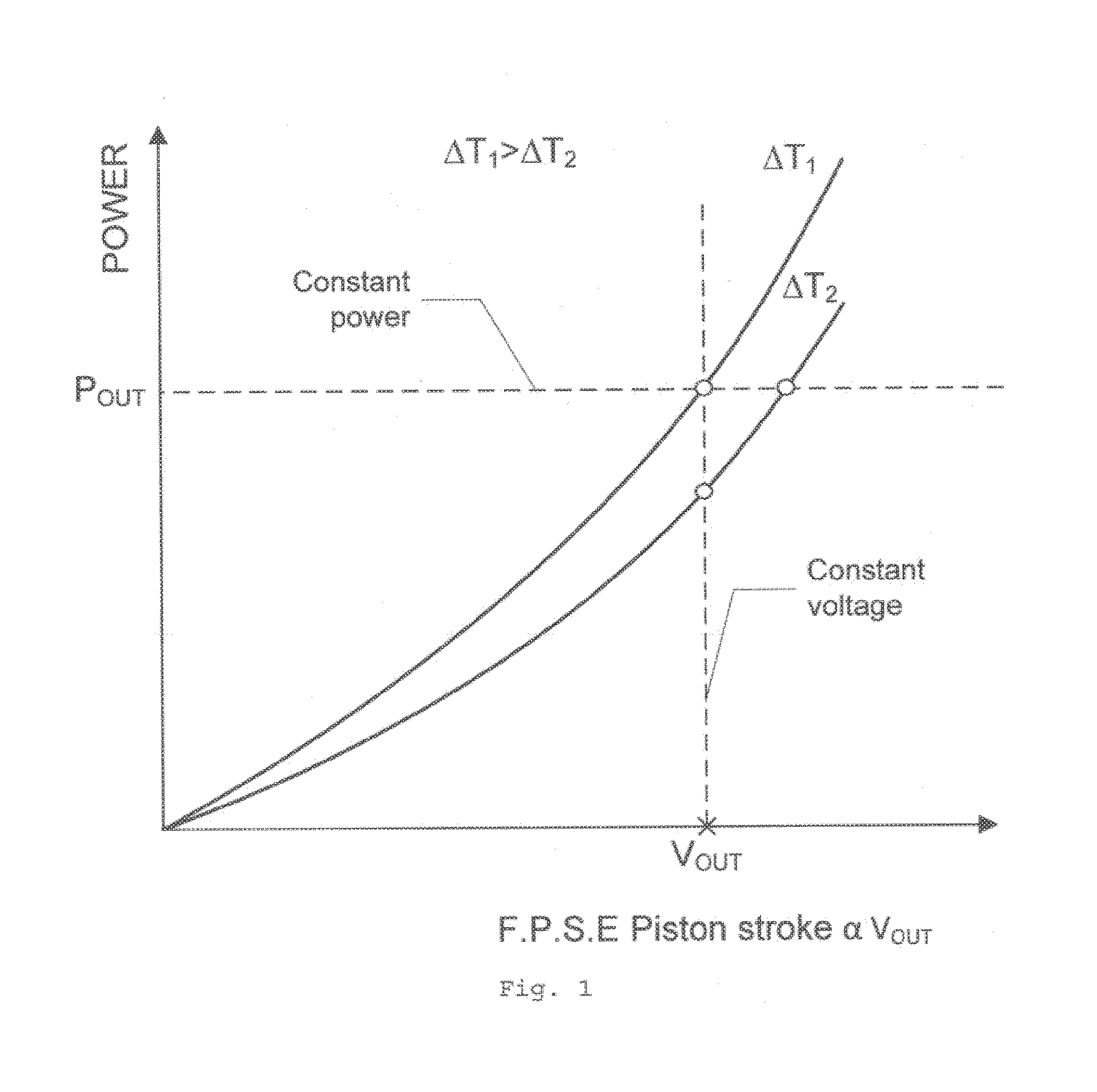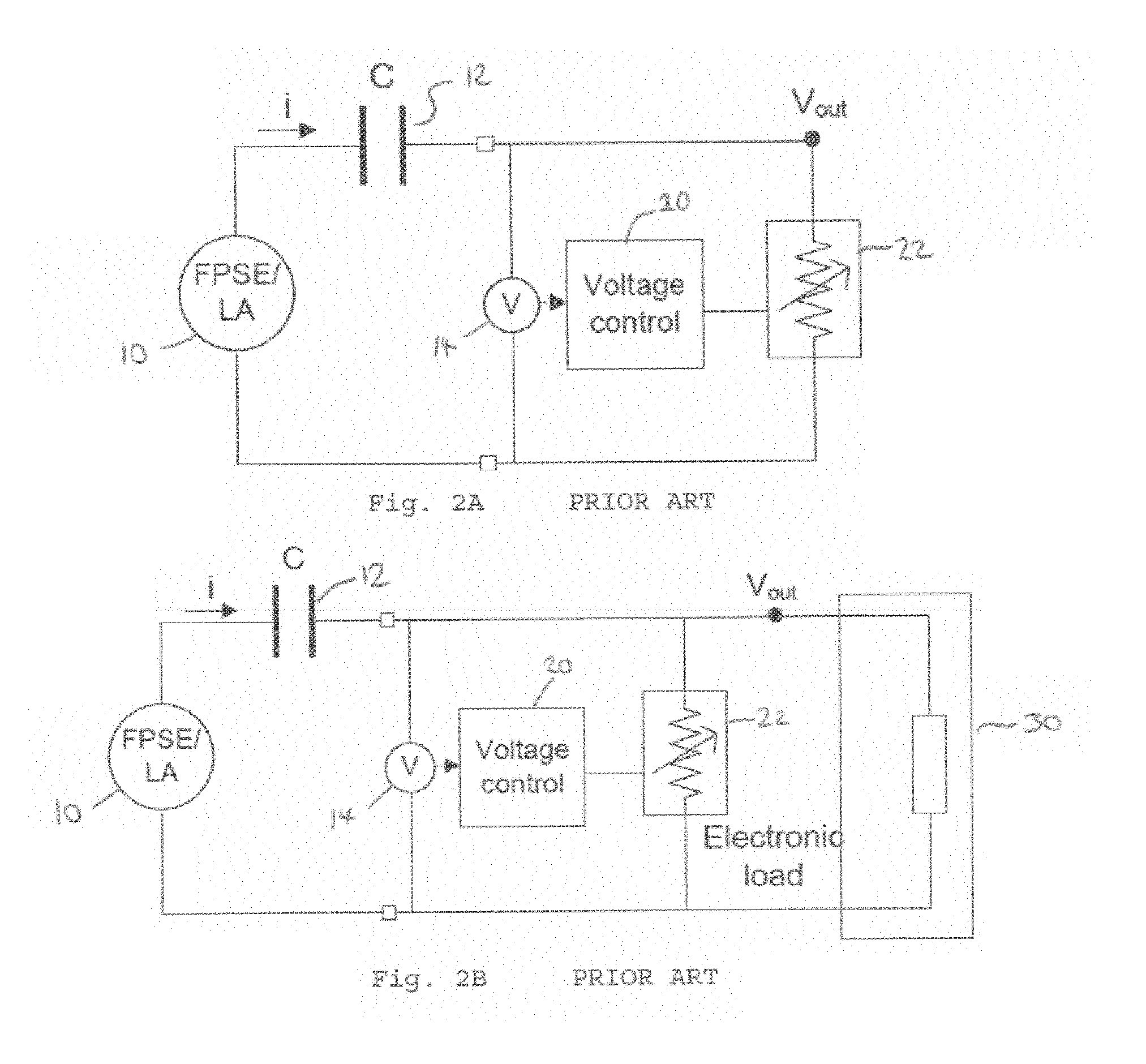Regulation of electrical generator output
a technology for electrical generators and regulators, applied in the direction of electric generator control, process and machine control, instruments, etc., can solve the problems of slow transient response, low reliability, high cost, etc., and achieve the effect of facilitating the generation of a stable dc level, reducing complexity and prone to problems, and facilitating tuning
- Summary
- Abstract
- Description
- Claims
- Application Information
AI Technical Summary
Benefits of technology
Problems solved by technology
Method used
Image
Examples
Embodiment Construction
[0057]Referring first to FIG. 2E, there is shown an equivalent circuit for a regulator technology in accordance with the invention. Some of the components of this circuit are the same as FIG. 2D and these are indicated by identical reference numerals. A power control block 43 uses the voltage measured by voltmeter 14 to generate a control signal for the AC chopper 44. Thus, a current meter and a second voltmeter are not needed. This circuit is intended to form a bridge between the alternator of a DCHP unit (of which the LFPSE 10 forms a part), an electrical grid and also local electrical appliances to ensure that the signal produced by the alternator is suitable for injection into the grid, supply to the connected appliances or both.
Control Approach
[0058]Referring next to FIG. 4A, there is shown a schematic diagram for an approach to generating an error signal for regulation of the output voltage for a generator based on a FPSE / LA. This is embodied as a voltage control block 100. Wh...
PUM
 Login to View More
Login to View More Abstract
Description
Claims
Application Information
 Login to View More
Login to View More - R&D
- Intellectual Property
- Life Sciences
- Materials
- Tech Scout
- Unparalleled Data Quality
- Higher Quality Content
- 60% Fewer Hallucinations
Browse by: Latest US Patents, China's latest patents, Technical Efficacy Thesaurus, Application Domain, Technology Topic, Popular Technical Reports.
© 2025 PatSnap. All rights reserved.Legal|Privacy policy|Modern Slavery Act Transparency Statement|Sitemap|About US| Contact US: help@patsnap.com



